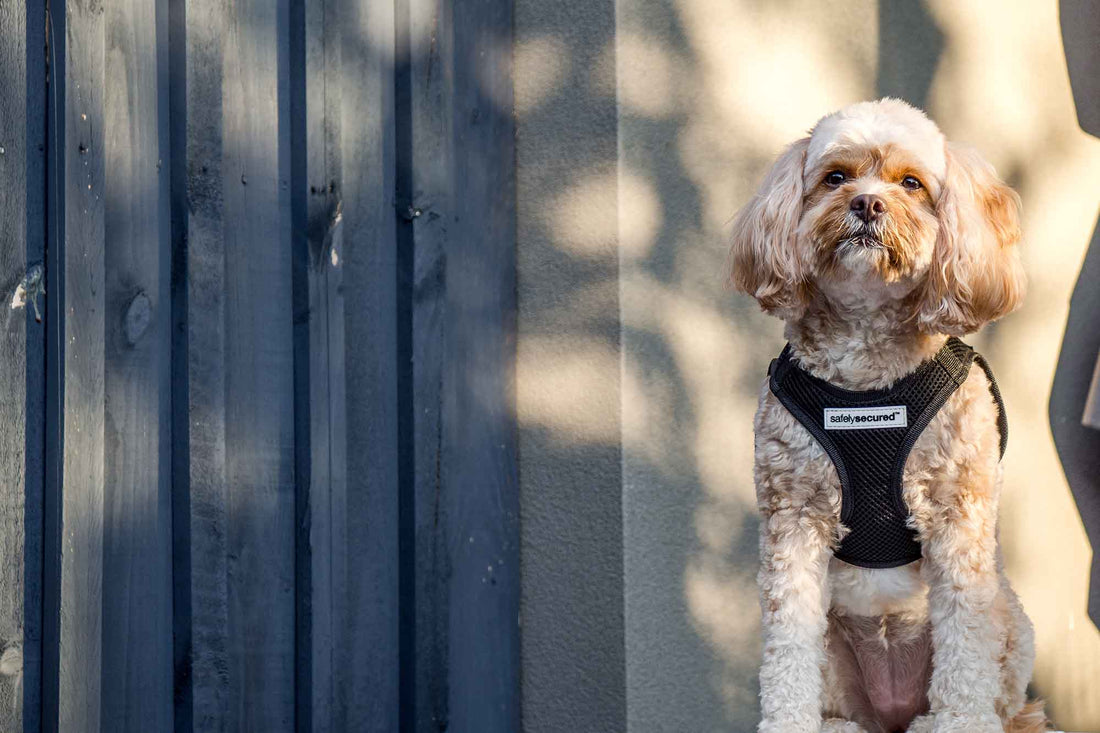When it comes to taking our beloved furry friends out for a walk, one of the most important decisions we face is whether to use a dog collar or a dog harness. Both options have their advantages and considerations, and every pet owner has their own preferences. In this blog, we'll dive into the dog collar vs. dog harness debate, weighing the pros and cons of each to help you make an informed choice that suits your dog's needs and your personal preferences.
The Dog Collar: Dog collars have been the go-to option for many dog owners for centuries. They come in various materials such as nylon, leather, or fabric, and are typically worn around the neck. Here are some points to consider:
- Simplicity and Ease of Use: Collars are straightforward and easy to put on and take off your dog. They are also lightweight and don't restrict movement, allowing your furry friend to feel more comfortable during walks.
- Identification and Control: Collars provide a convenient place to attach identification tags, making it easier for people to identify your dog if they happen to wander off. Additionally, collars are suitable for dogs who are well-trained and respond well to leash corrections, as they provide better control in certain situations.
- Potential Strain on the Neck: One significant concern with dog collars is the potential strain they can put on a dog's neck, especially if they tend to pull or lunge during walks. This strain can lead to discomfort, potential injury, or even respiratory issues, particularly for dogs with certain breeds or medical conditions.
The Dog Harness: Harnesses have gained popularity among dog owners in recent years, and for good reason. They wrap around the dog's chest and ribcage, distributing the pulling force more evenly. Let's explore the benefits:
- Enhanced Control and Safety: Dog harnesses provide better control over your dog's movements, particularly for those who tend to pull or have a strong prey drive. The distribution of force across the chest and shoulders reduces strain on the neck, making them a safer option, especially for small dogs or those prone to respiratory issues.
- Reduced Risk of Escaping: Some dogs have a talent for slipping out of their collars, especially if they're anxious or excitable. A properly fitted harness minimizes the chances of your dog wriggling out and escaping during walks, ensuring their safety and your peace of mind.
- Rehabilitation and Health Support: Harnesses are often recommended for dogs recovering from injuries or undergoing rehabilitation. They offer better support for joints and muscles, making them an ideal choice for senior dogs or those with mobility issues.
Choosing What's Best for Your Dog: Ultimately, the choice between a dog collar and a dog harness depends on your dog's unique needs and your personal preferences. Consider the following factors:
- Size and Breed: Smaller dogs, puppies, or breeds prone to respiratory issues may benefit from the reduced strain provided by a harness.
- Training and Behavior: If your dog is well-trained and doesn't pull excessively, a collar might be suitable. For dogs in training or those with behavioral issues, a harness can offer better control and redirect pulling tendencies.
- Comfort and Fit: Ensure that whatever option you choose fits your dog properly, doesn't cause discomfort, and allows for free movement.
At Safely Secured, we've got you covered whether you prefer dog collars or dog harnesses. Our selection includes anti-theft collars and harnesses to ensure the safety and security of your beloved pet. Choose what works best for your dog, knowing that we have the perfect fit for every furry friend. Prioritize your dog's well-being and comfort, keeping them safely secured during every outing.

